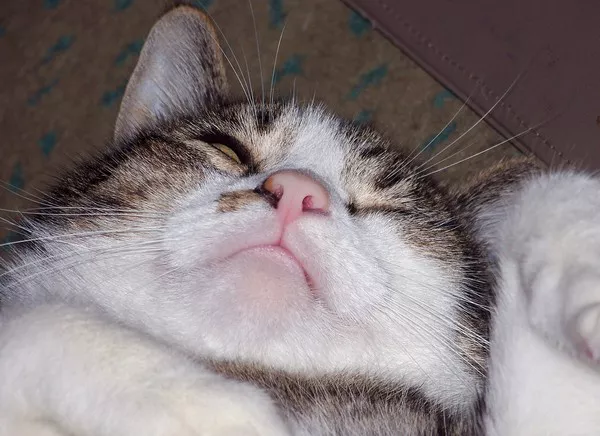Cats are renowned for their grooming habits, often spending a significant portion of their day cleaning themselves. However, the question of how often to bathe a short-haired cat can be a topic of confusion for many pet owners. While cats are generally good at maintaining their hygiene, there are circumstances where a bath may be necessary. This essay will explore the factors that influence the need for bathing short-haired cats, the benefits and challenges of bathing, and practical guidelines to ensure a positive bathing experience for both you and your feline friend.
Understanding Short-Haired Cats
Characteristics of Short-Haired Cats
Short-haired cats, such as American Shorthairs, British Shorthairs, and Siamese, have a coat that is typically easier to manage than that of long-haired breeds. Their fur lies close to the body, which reduces the tangling and matting that can occur with longer hair. However, this does not mean they are entirely self-sufficient when it comes to grooming.
Grooming Needs
Short-haired cats still require regular grooming, although the frequency may be less than that required for long-haired breeds. Regular brushing helps to remove loose fur, dirt, and dander, and it can also help reduce hairballs. While short-haired cats may not need baths as frequently, certain situations may necessitate a cleansing soak.
Factors Influencing Bath Frequency
General Recommendations
In general, short-haired cats do not require frequent baths. Most cat experts recommend bathing short-haired cats only when necessary, such as:
Every 6-12 months: For routine maintenance, most short-haired cats can go without a bath for several months.
As needed: If your cat gets into something particularly messy, such as mud, grease, or substances that could irritate their skin, a bath may be required.
Health and Skin Conditions
Certain health conditions may necessitate more frequent bathing:
Skin Allergies: Cats with allergies may benefit from more regular baths to help remove allergens from their skin and coat.
Fleas and Parasites: If your cat has a flea infestation or other parasites, a bath with medicated shampoo may be necessary to help eliminate the problem.
Medical Conditions: Some medical conditions, such as dermatitis or infections, may require your veterinarian to recommend more frequent bathing with specific medicated shampoos.
Lifestyle and Environment
The lifestyle of your cat can also influence how often they should be bathed:
Indoor vs. Outdoor Cats: Outdoor cats are more likely to get dirty and may require baths more frequently than indoor cats.
Activity Level: Active cats that play outdoors or engage in messy activities may need more frequent baths than those that are more sedentary.
Benefits of Bathing Short-Haired Cats
Cleanliness
Bathing your cat can help maintain their cleanliness, especially if they have gotten into something dirty or sticky. A bath can remove dirt, grease, and odors that regular grooming may not eliminate.
Skin Health
Regular bathing can promote healthy skin by removing dead skin cells, excess oil, and allergens. This can be particularly beneficial for cats with skin conditions or allergies.
Bonding Experience
Bathing your cat can also serve as an opportunity for bonding. With proper handling and positive reinforcement, you can create a calm environment that helps your cat feel secure during the bathing process.
Flea and Parasite Control
Bathing can be an effective part of a comprehensive flea and parasite control strategy. Using a medicated shampoo can help eliminate fleas and their eggs, contributing to overall flea management.
Challenges of Bathing Short-Haired Cats
Resistance to Water
Many cats are not fond of water, and bathing can lead to stress and anxiety. It’s essential to approach the bathing process with patience and care to minimize your cat’s discomfort.
Safety Concerns
Bathing a cat can pose safety risks, especially if they become agitated or try to escape. Ensuring a secure bathing environment is crucial to prevent injuries for both you and your cat.
Over-Bathing Risks
Bathing too frequently can strip the natural oils from your cat’s skin, leading to dryness and irritation. It’s important to find a balance that maintains your cat’s hygiene without compromising their skin health.
Tips for Effectively Bathing Your Short-Haired Cat
Prepare the Bathing Area
Before bathing your cat, ensure the bathing area is safe and comfortable. Here are some tips:
Choose a Suitable Location: A bathtub, sink, or large basin can work well. Ensure the area is secure and free from distractions.
Gather Supplies: Have all necessary supplies on hand, including cat shampoo, towels, and a non-slip mat to prevent slipping.
Use the Right Products
Selecting the right shampoo is crucial for your cat’s health:
Cat-Specific Shampoo: Always use shampoos specifically formulated for cats. Human shampoos can be too harsh and may irritate their skin.
Medicated Shampoos: If your cat has a specific skin condition, consult your veterinarian for recommendations on medicated shampoos that can aid in treatment.
Create a Positive Experience
To minimize stress during bathing, consider the following:
Introduce Water Gradually: If your cat is not accustomed to baths, gradually introduce them to water. Start with dampening their paws and slowly work up to their body.
Use Warm Water: Ensure the water is warm but not hot. Cats are sensitive to temperature, and comfortable water can help reduce stress.
Calm Environment: Keep the environment calm and quiet. Speak softly to your cat and use treats or toys to create positive associations.
Bathing Technique
When bathing your cat, follow these steps for the best results:
Wet the Fur: Use a cup or handheld showerhead to wet your cat’s fur thoroughly, avoiding the eyes and ears.
Apply Shampoo: Apply the cat shampoo according to the instructions, ensuring you lather it into the fur and skin.
Rinse Thoroughly: Rinse your cat thoroughly to remove all shampoo, as any residue can irritate their skin.
Drying: After bathing, gently towel dry your cat. If your cat tolerates it, you can use a low-setting hairdryer to help dry their fur, keeping it at a safe distance to prevent overheating.
Monitor Your Cat Post-Bath
After bathing, observe your cat for any signs of distress or discomfort. Ensure they have a warm, dry place to rest and recover. If your cat shows signs of anxiety or aggression during or after the bath, consider consulting a veterinarian or a professional groomer for assistance.
Alternatives to Bathing
Spot Cleaning
If your cat becomes particularly dirty but does not require a full bath, spot cleaning can be an effective alternative. Use a damp cloth or pet wipes to clean specific areas, such as paws or fur that may have come into contact with dirt or allergens.
Regular Grooming
Regular grooming can help maintain your cat’s cleanliness and reduce the need for frequent baths. Brushing your cat’s fur removes loose hair, dirt, and debris, while also distributing natural oils for a healthy coat.
Professional Grooming Services
If you find bathing your cat challenging, consider seeking help from a professional groomer. Many groomers are experienced in handling cats and can provide a safe and stress-free bathing experience.
Conclusion
Determining how often to give your short-haired cat a bath is influenced by various factors, including their lifestyle, health, and the environment in which they live. While short-haired cats generally do not require frequent baths, understanding when and how to bathe them can help maintain their hygiene and overall health.
By following the guidelines outlined in this essay, you can ensure that your cat remains clean, healthy, and happy. Remember to approach bathing with patience, use the right products, and create a calm environment to minimize stress. With the right care, your short-haired cat can thrive, enjoying the benefits of regular grooming and bathing while forming a strong bond with you.
Related topic:

























